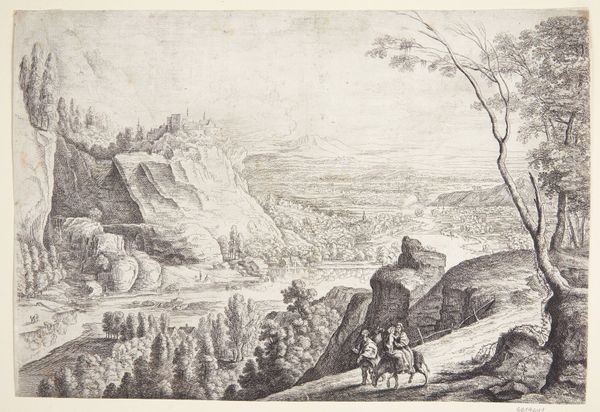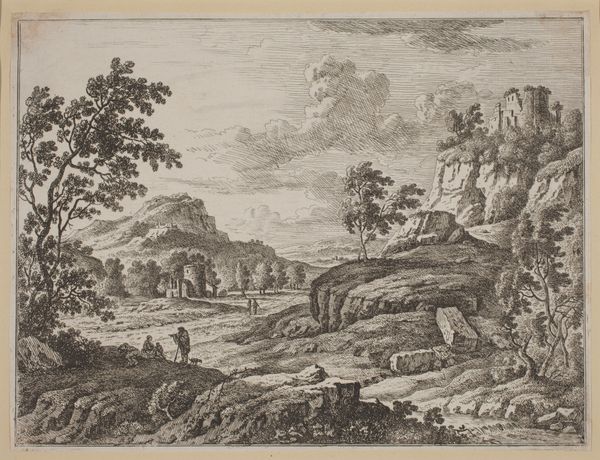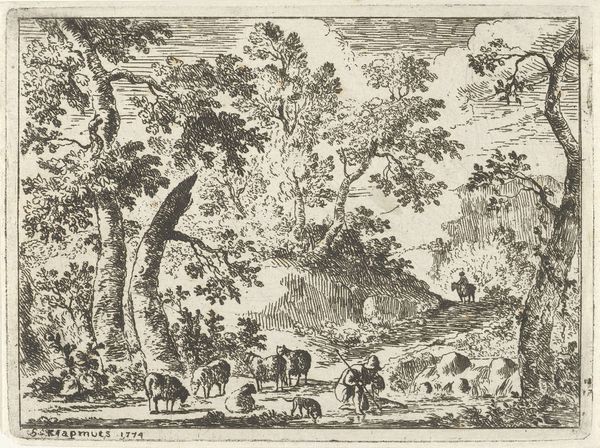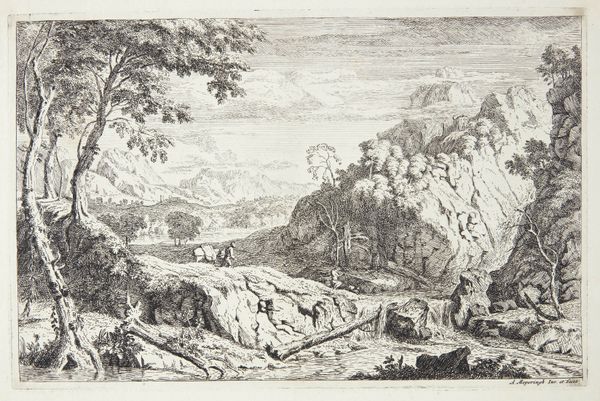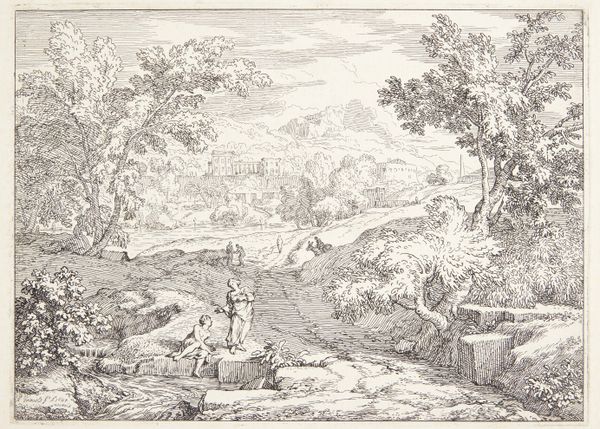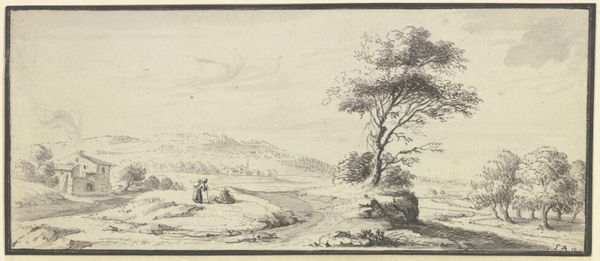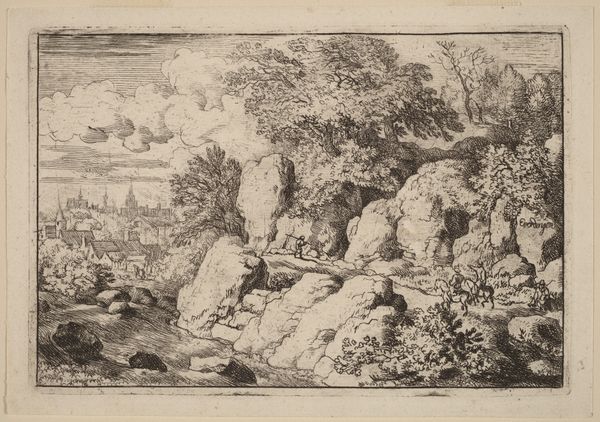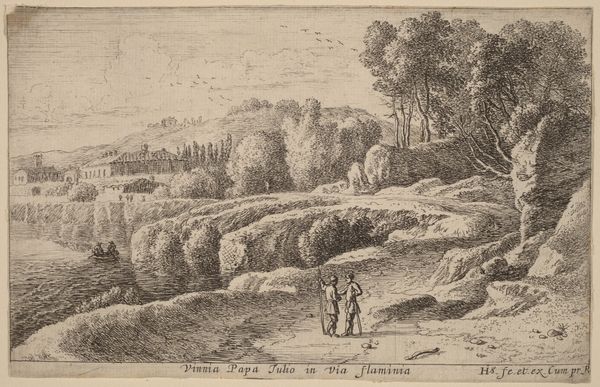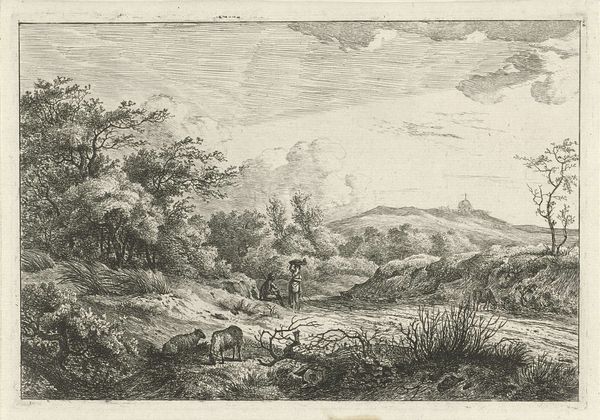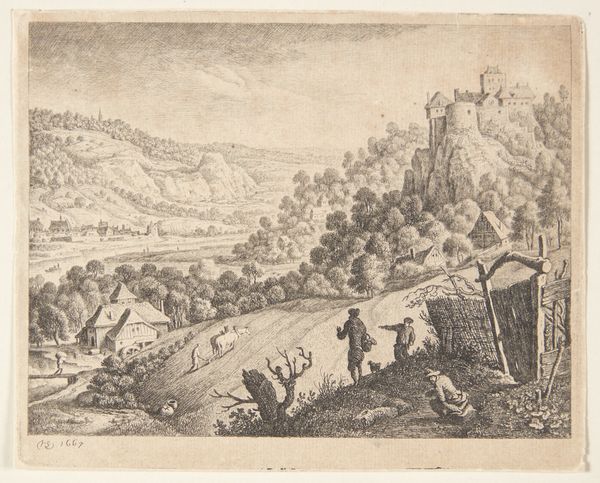
print, etching
#
baroque
#
dutch-golden-age
# print
#
etching
#
landscape
#
figuration
Dimensions: 226 mm (height) x 322 mm (width) (bladmaal)
Curator: Before us, we have “Landscape with the Flight into Egypt” by Lucas van Uden, a print, an etching, created sometime between 1595 and 1673, here at the Statens Museum for Kunst. Editor: It's delicate, almost ethereal. The sheer density of the lines to conjure that sweeping landscape is quite something. Curator: Indeed, the compositional elements are key. Note the strong diagonal that guides our eye from the foreground figures towards the distant cityscape. The interplay of light and shadow, achieved through varied etching techniques, lends depth. Editor: I'm immediately drawn to the texture. The roughness of the hillside in the foreground contrasts starkly with the smooth, almost polished sky. You can almost feel the grain of the paper through the ink. Tell me more about this landscape tradition and van Uden's role. Curator: Van Uden’s placement firmly situates the narrative—the holy family fleeing Herod—within the larger scope of baroque landscape traditions, and echoes themes prevalent during the Dutch Golden Age. See how this particular narrative is made almost incidental by the overwhelming scale of its context. Editor: Absolutely. The ‘Flight’ is merely a motif woven into this celebration of place. But the act of making, all that detailed etching. Is this a commercially viable exercise? I suppose there’s value in editions… Curator: Undeniably. The etching process, itself a mode of production and dissemination, enabled Van Uden, or his publisher, to reach a far broader audience than through a unique painting. Though seemingly paradoxical given this scope, note how he emphasizes the singular experience. Consider how each individual print becomes something uniquely altered in production from all others in that print edition—thus disrupting assumptions of simple mechanical reproducibility. Editor: It’s true; the small variations, the subtle inconsistencies are compelling. Even this particular piece feels hand-worked—imbued with artistry despite the mechanical process. Perhaps that explains the seemingly contradictory level of craft we can sense as we study this print. Thank you, I see how this single etching can inform on an artistic tradition while illuminating the nuances that elevate certain art objects. Curator: Yes, observing how the technique of its making contributes to and shapes a piece's narrative capacity is also crucial. It alters our perceptions on a very subtle level.
Comments
No comments
Be the first to comment and join the conversation on the ultimate creative platform.
